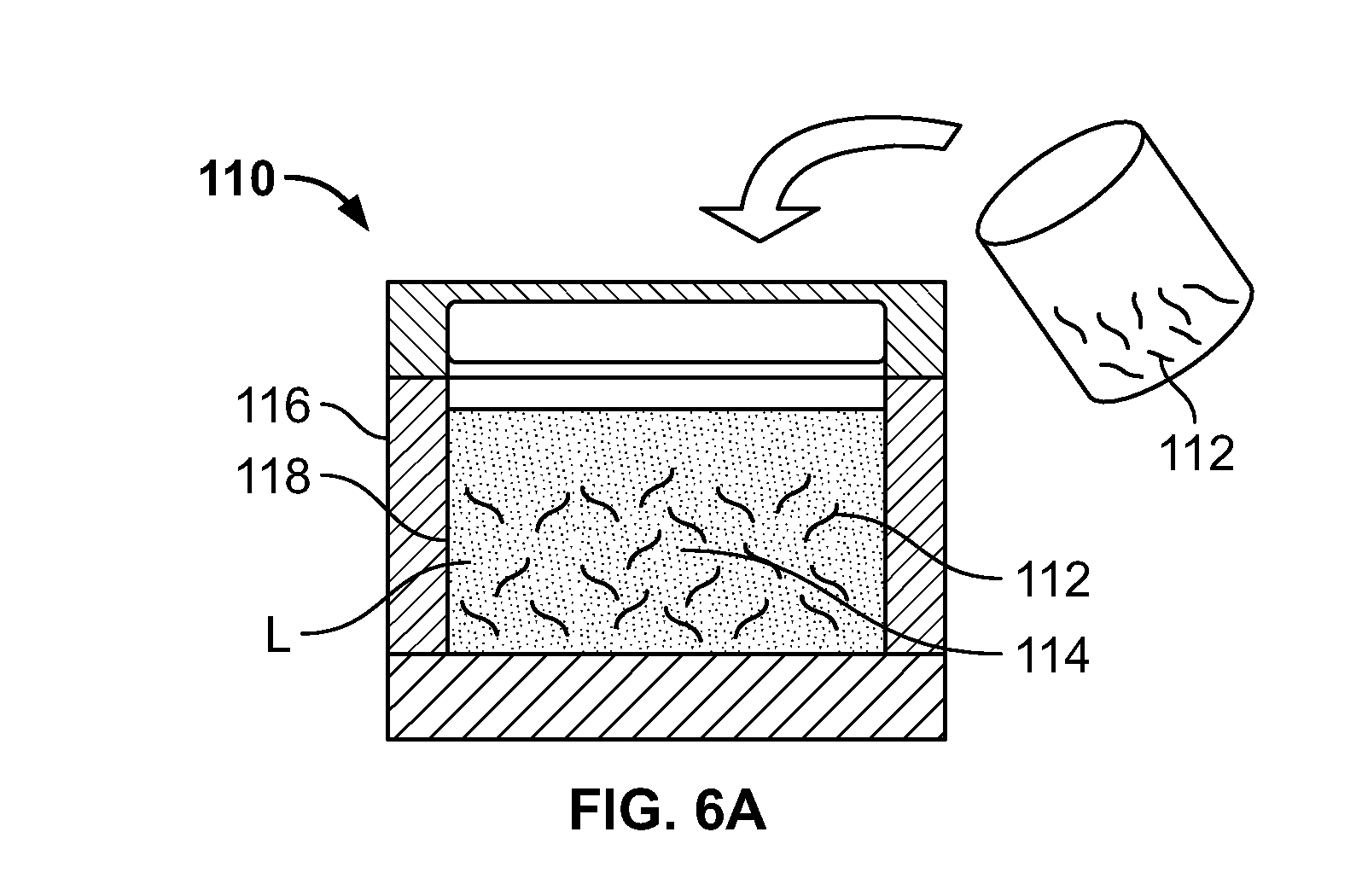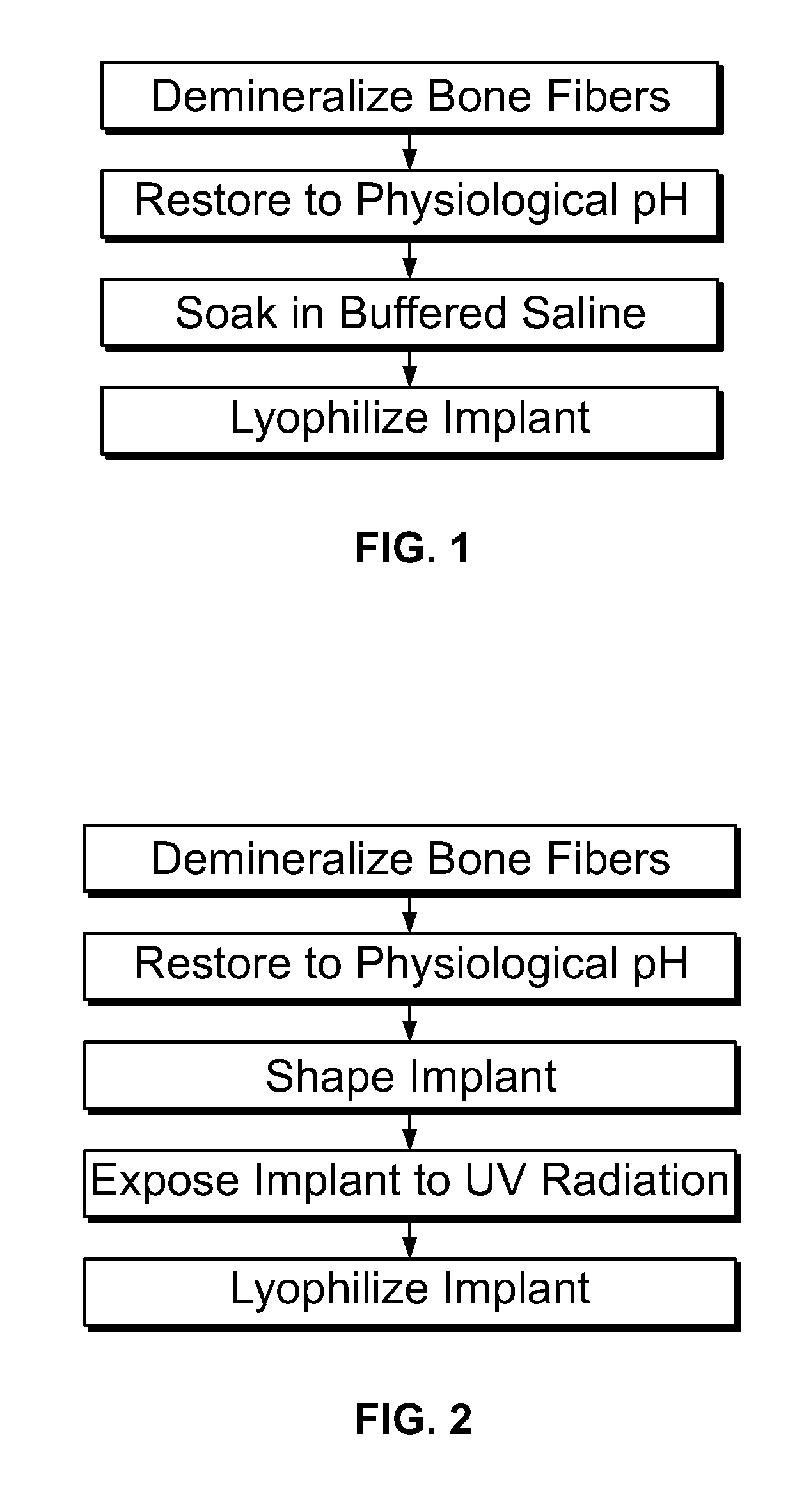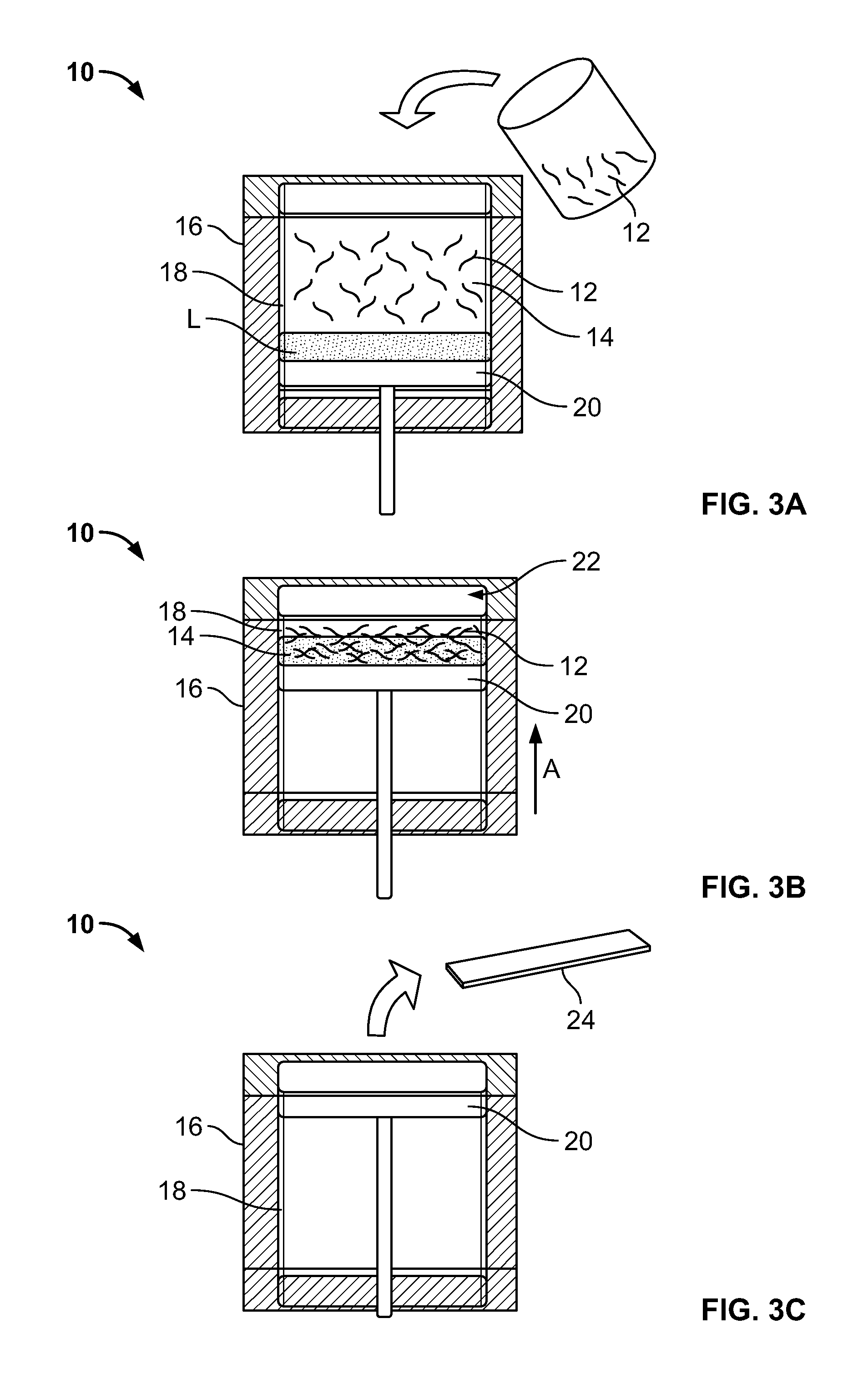Modified demineralized cortical bone fibers
- Summary
- Abstract
- Description
- Claims
- Application Information
AI Technical Summary
Benefits of technology
Problems solved by technology
Method used
Image
Examples
example 1
Fabrication of Demineralized Cortical Bone Fibers
[0066]Human long bone is recovered aseptically from a deceased donor and stored at 4° C. until ready for processing. The bone is debrided to remove soft tissue elements and the shaft of the bone is cut into cross-sections. The cortical bone is then cleaned using detergents / surfactants to remove residual blood and lipids from the bone surface.
[0067]To create DCBF, the bone sections are first shaved across the shaft of the bone using a controlled advancement rate of a lathe bit having a width approximately equal to the desired length of the bone fibers. The shaft segment is secured in a vice with a sufficient portion of the shaft protruding such that the protruding portion may be shaved. On a milling machine, a straight flute end-mill is set up such that its axis is parallel with the axis of the shaft. Utilizing the required length of the of the broad edge of the lathe bit, fibers are shaved off of the shaft by running the end-mill back...
example 2
Treatment of DCBF with PBS
[0069]DCBF are prepared as described in Example 1. After completion of the second water soak, the DCBF are decanted into a vessel, and PBS is added at a ratio in a range of about 1:3 DCBF / PBS (g / ml) to about 1:15 DCBF / PBS (g / ml). After 5 to 15 minutes of a static soak, the DCBF are decanted from the PBS, and air-dried. Additional PBS is added to the DCBF at a ratio in a range of about 1:1 DCBF / PBS (g / ml) to about 1:5 DCBF / PBS (g / ml) in a plastic jar, and the wet DCBF are lyophilized.
example 3
Preparation of Low-Density Pre-Formed Fiber Shapes Using DCBF and Saline
[0070]Low-density pre-formed fiber shapes are lyophilized DCBF which are suspended in liquid prior to lyophilization to provide a fluffy texture and a high void volume. They are hydrated by a surgeon in the operating room to form a putty-like substance for use as a bone void filler.
[0071]Low-density pre-formed fiber shapes were prepared using water or different ratios of 0.9% sodium chloride in water (“saline”, in particular 0.25× saline, 0.5× saline, 0.75× saline, and 1× saline) to examine the effect of salt concentration on hydration time and handling properties of the implants. The samples prepared with water were used as control samples; the samples prepared with saline solutions were examined as test samples.
[0072]Samples of air-dried DCBF prepared according to Example 1 were soaked in water or saline at selected concentrations at a ratio in a range of about 1:3 DCBF / liquid (g / ml) to about 1:15 DCBF / liquid ...
PUM
 Login to View More
Login to View More Abstract
Description
Claims
Application Information
 Login to View More
Login to View More - R&D
- Intellectual Property
- Life Sciences
- Materials
- Tech Scout
- Unparalleled Data Quality
- Higher Quality Content
- 60% Fewer Hallucinations
Browse by: Latest US Patents, China's latest patents, Technical Efficacy Thesaurus, Application Domain, Technology Topic, Popular Technical Reports.
© 2025 PatSnap. All rights reserved.Legal|Privacy policy|Modern Slavery Act Transparency Statement|Sitemap|About US| Contact US: help@patsnap.com



